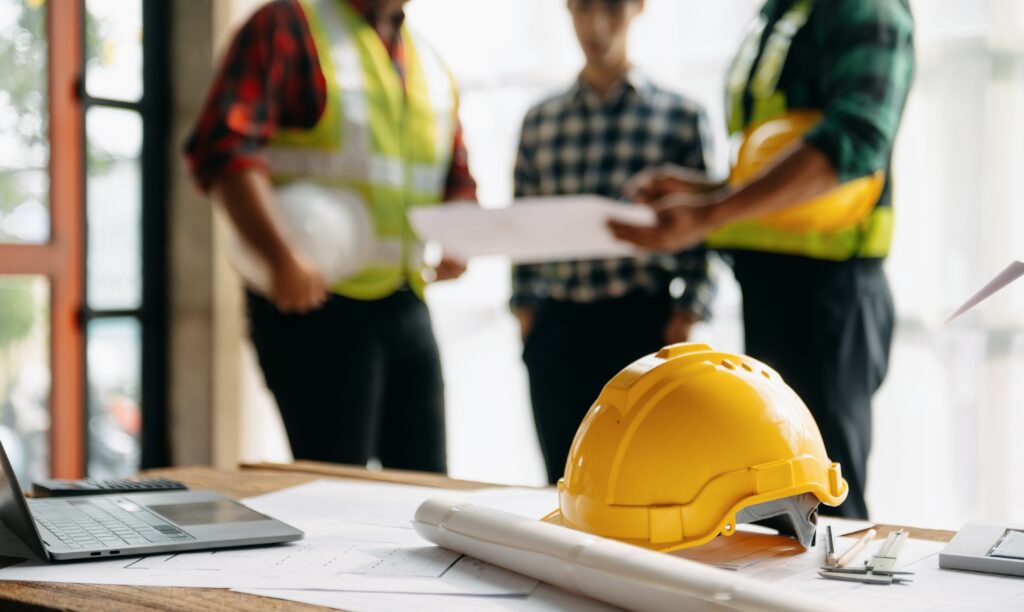
The construction industry is prone to numerous setbacks, including those from accidents at the worksite. Safety is of utmost importance to any commercial construction company which is why risk management is instrumental to avoiding these situations and setting future projects up for success.
But what does risk management in construction look like? Below are some of the ways Division 9 Commercial Construction reduces risks while increasing safety on the job site:
Identifying Risks
Risk management in construction is identifying potential risks, evaluating their impact, and implementing procedures to mitigate their financial effect on the business. With this strategic process, construction firms can minimize the likelihood of – and loss from – undesired events while maximizing rewards. Key areas to consider include:
- Financial Risk: Monetary risks related to budgeting, cost overruns, and financial stability of stakeholders.
- Safety Risk: Accidents and hazards that could cause injury or harm to workers on-site.
- Operational or Project Risk: Risks associated with the project’s workflow, such as delays or equipment failures.
- Economic Risk: Inflation or market fluctuations are broader economic factors that might affect the project.
- Legal Risk: These are risks related to compliance with laws and regulations.
- Political Risk: Projects may be adversely affected by changes in government policies or political instability.
Ranking Risks in Order of Importance
After identifying risks, it’s important to rank them based on their potential impact and likelihood of occurrence. This prioritization helps focus attention and resources on the most significant threats to the project.
Developing and Executing a Risk Response Strategy
After ranking the risks, the next step is to develop strategies to mitigate or avoid them and then execute these plans effectively. This involves planning specific actions for each identified risk:
- Avoidance: Changing the current plan to circumvent the risk.
- Mitigation: Taking steps to reduce the impact or likelihood of the risk.
- Transfer: Shifting the risk to another party, such as through insurance or contracts.
- Acceptance: Acknowledging the risk and preparing to deal with its consequences if it occurs.
Once the risk response strategies are defined, it’s time to put them into action. This involves implementing safety protocols, securing financial safeguards, ensuring legal compliance, and maintaining open communication among all project stakeholders. As part of the program, workers are also trained thoroughly and drills regularly to prepare them for potential safety hazards.
Creating a Contingency Plan

No matter how well risks are managed, unexpected events can still occur. Having a contingency plan in place ensures that the project can continue smoothly even if a significant issue arises. This plan includes predefined actions and resources that can be mobilized quickly to address any emergencies.
Monitoring, Reevaluating, and Assessing Impact
Risk management is not a one-time task but an ongoing process. Continuous monitoring and reevaluation of risks help maintain safety and efficiency. Regular site inspections, feedback loops, and updates to the risk management plan help ensure that new risks are identified and managed promptly.
It’s also important to assess the impact of the risk management strategies and review the results. This involves analyzing how well the strategy worked and identifying areas for improvement. By learning from past experiences, Division 9 Commercial Construction continually enhances its risk management practices.
Successful commercial construction projects have effective risk management in place. By identifying, ranking, and responding to risks, commercial construction companies can maintain high safety standards and ensure project success. Continuous monitoring and adaptability are key to staying ahead of potential issues and safeguarding both the workforce and the project’s integrity.
Ready to start your commercial construction project? Contact Division 9 Commercial Construction today.
